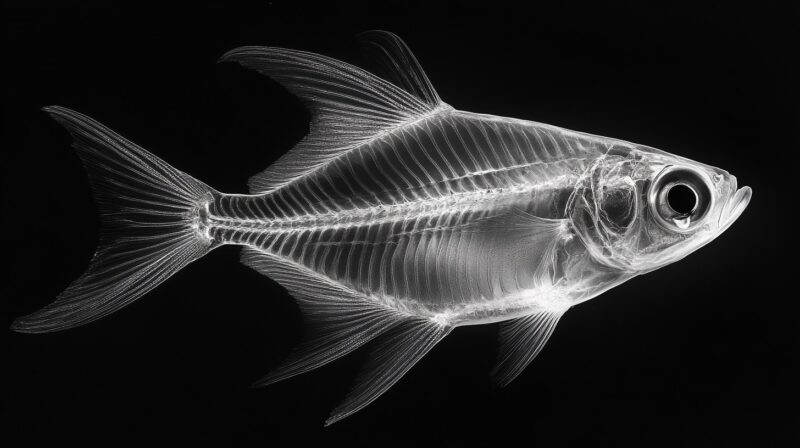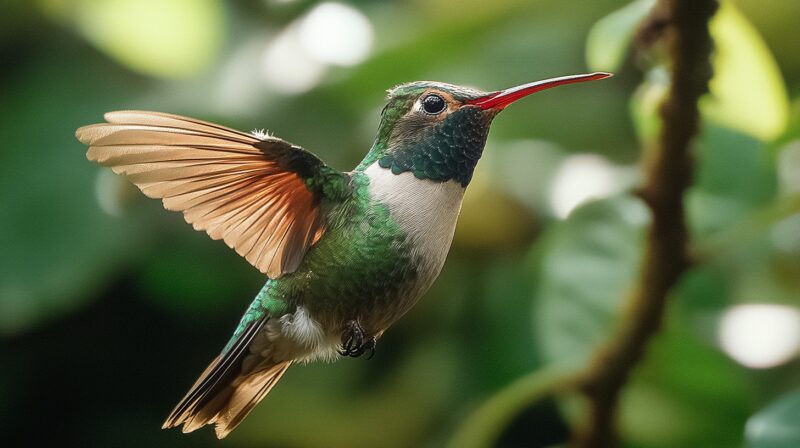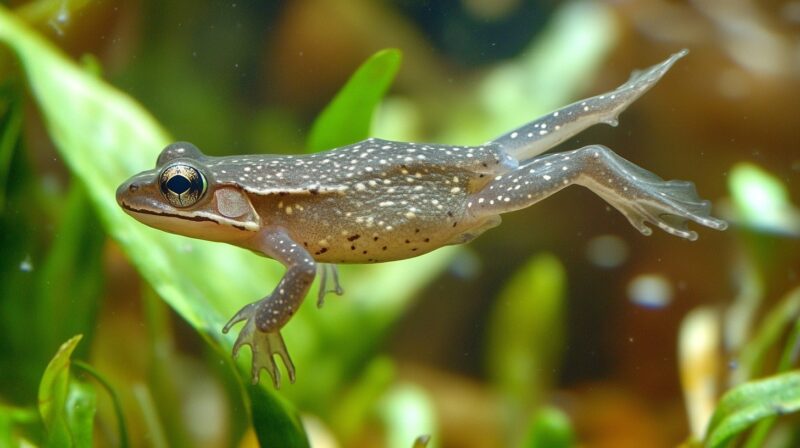When it comes to the animal kingdom, certain letters like “A” or “S” bring to mind a wealth of well-known creatures, but what about the more obscure letters of the alphabet?
One such example is the letter “X.”
While it may seem like a tricky letter for animal names, there are some fascinating creatures whose names begin with this enigmatic letter.
Despite their rarity in our vocabulary, these animals are anything but ordinary.
Many of these species remain unfamiliar to the average person, yet they each play an important role in their ecosystems and have some truly fascinating characteristics.
Let’s talk about them.
1. Xerus

The Xerus is a fascinating member of the ground squirrel family, primarily found in the grasslands and open forests of Africa. Known for its social behavior and distinct adaptations to its environment, the Xerus is an example of survival in arid regions.
- Species: Ground squirrel species (Sciuridae family)
- Size: Small to medium, around 18 to 26 cm in body length
- Weight: Typically 0.4 to 1 kg
- Region of origin: Southern Africa, including South Africa, Namibia, and Botswana
- Habitat: Grasslands, scrublands, and open forests
- Diet: Herbivorous; primarily feeds on seeds, roots, and bulbs
- Social structure: Highly social, living in groups of up to 20 individuals
- Lifespan: 6 to 8 years in the wild
The Xerus plays a significant role in its ecosystem by dispersing seeds and helping to aerate the soil as it digs for food.
Their burrows offer protection from predators and provide a cool retreat from the harsh African sun.
One of the most interesting aspects of the Xerus is its group behavior. It’s an animal that often lives in colonies, where up to 20 squirrels share burrows and resources.
The social structure allows them to better survive predators and thrive in the challenging conditions of their habitat.
Xerus are highly resilient and adaptable, with impressive digging abilities that help them find food even in dry, inhospitable environments.
Their interactions with their environment and each other offer a captivating glimpse into the survival strategies an animal can have in arid regions.
2. X-Ray Tetra

The X-Ray Tetra, also known by its scientific name Pristella maxillaris or the Golden Pristella Tetra, is a small freshwater fish native to the waters of South America.
This fish gets its name from its translucent, glowing body, which helps it evade predators.
- Species: Pristella maxillaris (Golden Pristella Tetra)
- Size: Small, about 5 cm (2 inches) in length
- Weight: Very light, typically under 1 gram
- Region of origin: Amazon River basin, including Brazil, Venezuela, and Guyana
- Habitat: Freshwater rivers and streams
- Diet: Carnivorous; feeds on small pests like worms, shrimp, plankton, and tiny invertebrates
- Body color: Translucent with a glowing effect for protection against predators
- Fins: Brightly colored, often yellow or pink, with pointed shapes
- Lifespan: Typically 3 to 5 years in captivity
The X-Ray Tetra’s transparent body is its most striking feature, allowing it to blend into its surroundings and avoid being easily spotted by predators. This adaptation not only gives the fish its name but also serves as an important survival mechanism.
Native to the Amazon River basin, this species thrives in freshwater environments where it can feed on tiny pests like worms, shrimp, and plankton. Its small size and ability to adapt to different water conditions make it a popular choice for aquariums around the world.
Female X-Ray Tetras tend to be slightly rounder in body shape compared to males, especially when ready to breed. The fish’s colorful, pointed fins, usually in vibrant shades of yellow or pink, add to its visual appeal, making it a favorite among fish enthusiasts.
3. Xantus’s Hummingbird

The Xantus’s Hummingbird is a beautiful and rare species of hummingbird that can only be found in a specific region of Mexico. Known for its vibrant appearance and delicate size, this bird is an important pollinator and predator in its ecosystem.
- Species: Hummingbird (Trochilidae family)
- Size: Medium-sized, around 8 to 9 cm long
- Weight: Light, approximately 3 to 4 grams
- Region of origin: Baja California, Mexico
- Habitat: Bushes, city parks, forests
- Diet: Primarily nectar from plants; also preys on spiders, crickets, and termites
- Social structure: Typically solitary, but interacts with other birds at feeding sites
- Lifespan: 3 to 5 years in the wild
The Xantus’s Hummingbird is not just a nectar lover—it also plays a role as a small but effective predator. Its long tongue is perfectly adapted for reaching into flowers to sip nectar, but it also hunts small insects, which provide essential protein for its diet.
This bird is visually striking, with green and bronze feathers that shimmer in the sunlight. Despite its small size, the Xantus’s Hummingbird is an important pollinator for many plant species, helping to maintain the health of its local ecosystem.
4. Xenops
The Xenops is a small, distinctive bird from the Furnariidae family, known for its physical features and sharp song. Found in tropical rainforests, this bird is an excellent insect hunter, using its specialized beak to forage in decaying wood.
- Species: Three extant types (Plain Xenops, Slender-billed Xenops, and Spotted Xenops)
- Size: Approximately 12.5 cm (5 inches) in length
- Weight: Around 12-15 grams
- Region of origin: Tropical rainforests of Central America and South America
- Habitat: Tropical and subtropical forests
- Diet: Insectivorous; primarily feeds on ants and other insects by pecking at decaying wood
- Social structure: Solitary or in pairs, often seen foraging alone
- Lifespan: Unknown, typical for small passerine birds is around 5-10 years
Xenops birds are highly skilled at extracting insects from rotting wood, using their sharp, slightly curved beaks, particularly in the case of the Plain and Spotted Xenops. This adaptation makes them efficient foragers in dense rainforest environments where decaying wood is abundant.
The three species of Xenops are distinguished by subtle differences in their beak shape and coloration. The Plain Xenops (Xenops minutus) is known for its flat beak, while the Slender-billed Xenops (Xenops tenuirostris) has a more pointed bill.
The Spotted Xenops (Xenops rutilans) has distinctive markings that set it apart visually.
Though small and lesser-known, the Xenops plays an important role in maintaining the balance of rainforest ecosystems by controlling insect populations. Its sharp, rapid song is often heard echoing through the forest, even when the bird itself is difficult to spot among the dense foliage.
5. Xenopus

Xenopus, also known as the African Clawed Frog, refers to a genus that includes 20 extant species of aquatic frogs.
Native to Sub-Saharan Africa, Xenopus frogs are known for their distinct physical characteristics and significant use in biomedical research, particularly the species Xenopus laevis.
- Species: African Clawed Frogs (Genus: Xenopus, Species: Xenopus laevis and others)
- Size: Typically 5 to 13 cm in body length, depending on the species
- Weight: 100 to 200 grams for adults
- Region of origin: Sub-Saharan Africa
- Habitat: Primarily aquatic, found in ponds, rivers, and wetlands
- Diet: Carnivorous; feeds on small invertebrates, larvae, and organic matter
- Social structure: Solitary, except during breeding periods
- Lifespan: Up to 15 years in captivity, shorter in the wild
Xenopus frogs are highly adapted to their aquatic environments, with flattened, oval-shaped bodies and smooth, slippery skin. Their eyes are positioned on top of their heads, allowing them to keep watch for predators while staying submerged.
One of the most distinct features of Xenopus frogs is their powerful, webbed feet with striking black claws on three toes of each foot. These claws are used for foraging and defense, while their small forelimbs help them manipulate food.
Interestingly, Xenopus frogs lack certain anatomical features found in many other amphibians, such as moveable eyelids, eardrums, and tongues. Instead, they rely on other specialized adaptations to navigate and thrive in their aquatic habitats.
6. Xoloitzcuintli

The Xoloitzcuintli, often referred to simply as Xolo, is an ancient hairless dog breed from Mexico.
Known for its smooth, hairless body and calm demeanor, this breed has a rich history and remains popular today as both a companion and a cultural symbol.
- Species: Domestic dog (Canis lupus familiaris)
- Size: Three types—Toy (10-14 inches), Miniature (14-18 inches), Standard (18-23 inches)
- Weight: Ranges from 4 to 20 kg (10 to 50 lbs)
- Region of origin: Mexico
- Coat: Hairless, with small amounts of short, coarse hair on the head and tail
- Color: Ranges from black, grayish-black, bronze, red, to slate gray
- Temperament: Calm, intelligent, alert, athletic, loyal, loving, and obedient
- Exercise needs: Moderate; requires regular daily exercise but should avoid extended exposure to sunlight
- Grooming: Both the coated and hairless varieties are easy to groom, needing regular weekly baths to keep their skin clean
- Lifespan: 15 to 20 years
The Xoloitzcuintli is a dog of remarkable appearance, characterized by its smooth skin, large bat-like ears, and wrinkled brow.
Its calm and loving temperament makes it an excellent house companion. The Xolo is sensitive to sunlight and needs protection when outside for long periods.
Known for its intelligence and loyalty, the Xolo is quick to form strong bonds with its human family.
The breed’s long lifespan and affectionate nature have made it a cherished companion for centuries, particularly in its homeland of Mexico, where it holds deep cultural significance.
The Bottom Line
Exploring the animal kingdom often brings us face-to-face with the unexpected, and the creatures that start with the letter X are no exception.
Though they may be lesser known, their characteristics and adaptations make them fascinating subjects.
If you want to check out animal-related topics on our website, check here.

